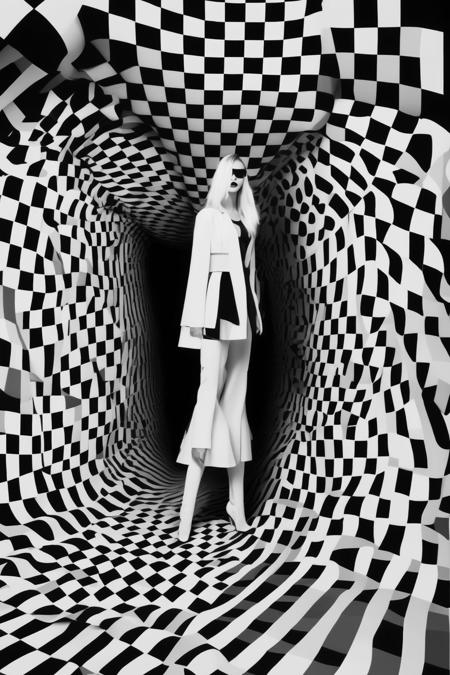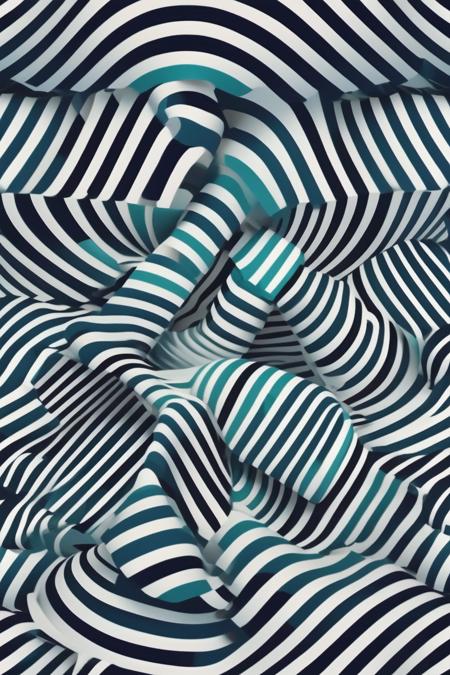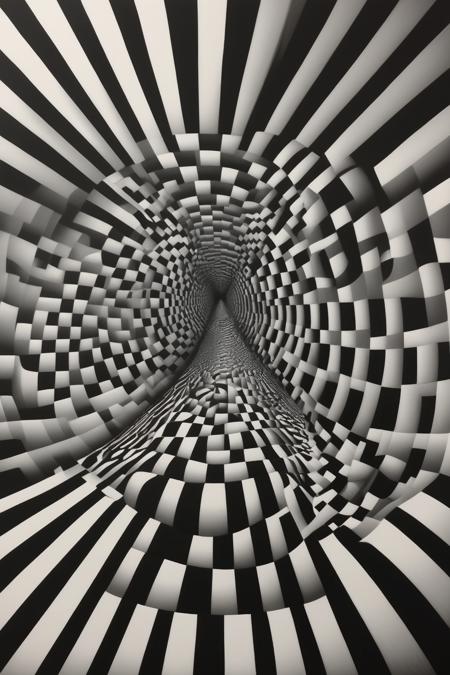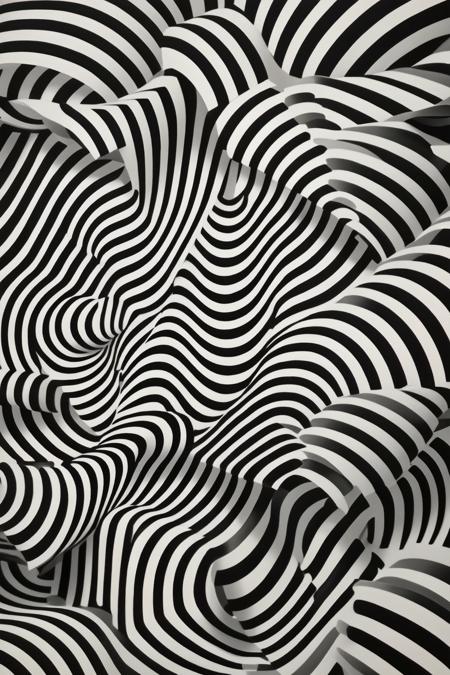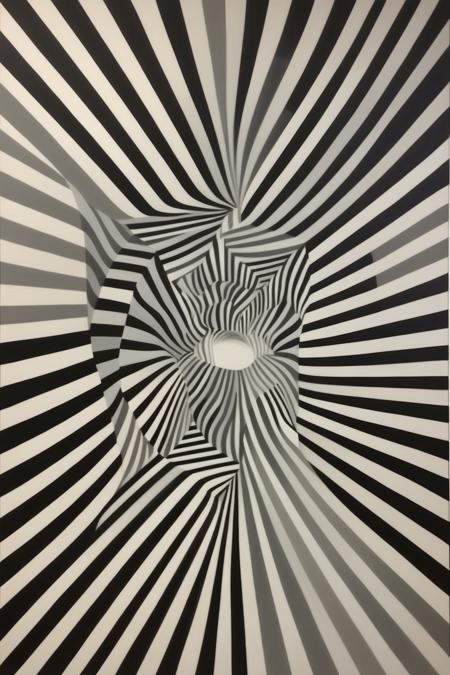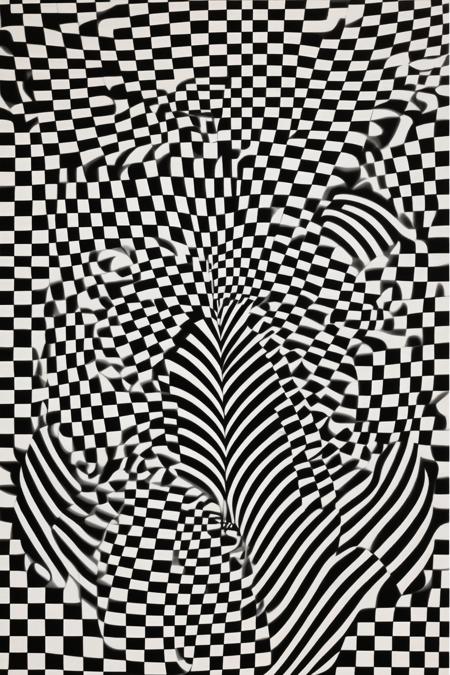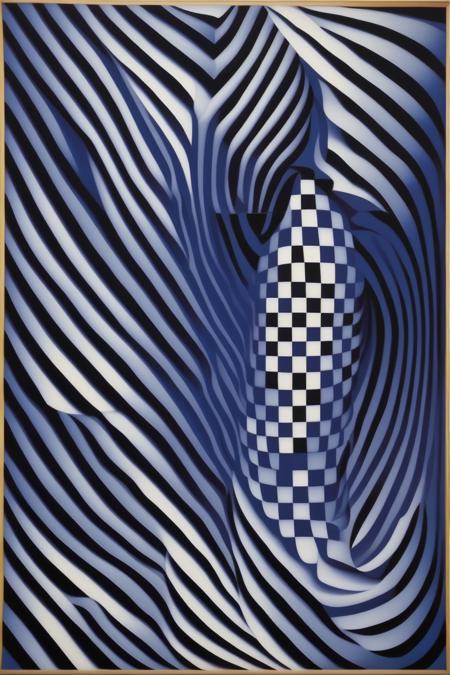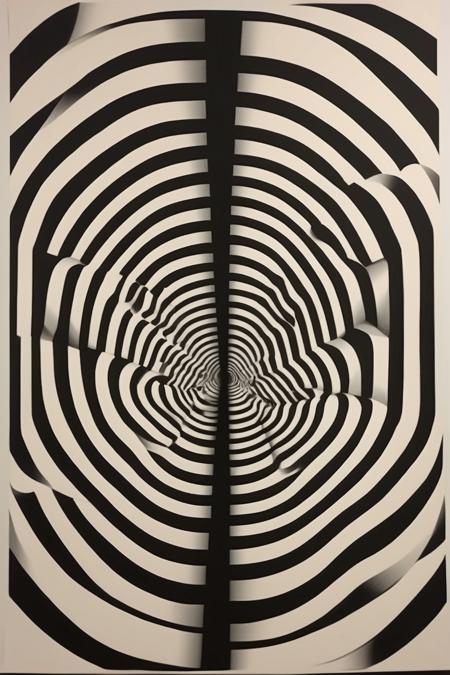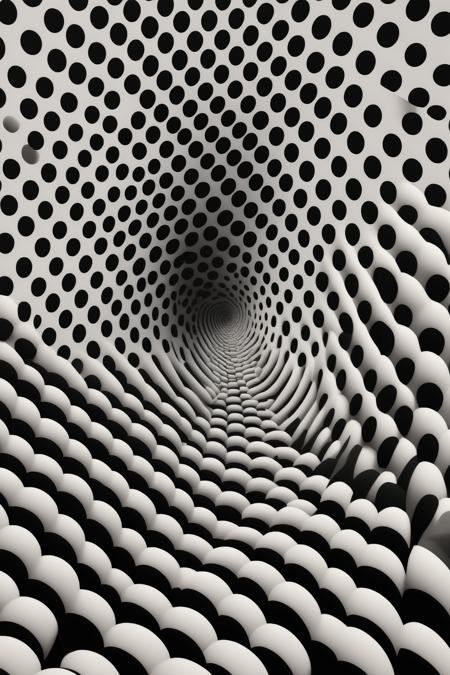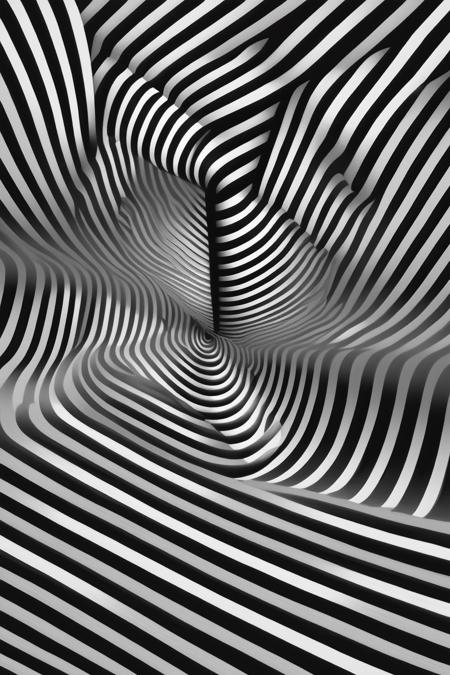Op Art (CivitAI
Op Art - Step into the world of Op Art Fashion, where brocade and chintz fabrics come alive with pixelated plaid designs. Get ready to be mesmerized by optical illusions and swirling parabolic shapes that create a sense of mesmerizing movement. This composition is a visual feast for the eyes, with intricate patterns and bold colors that captivate the imagination. The interplay of light and shadow adds depth and dimension, enhancing the overall optical effect. As you delve into this opulent fashion realm, prepare to be enchanted by the dynamic and ever-changing visual illusions that this style has to offer. Get ready to make a fashion statement like no other with this captivating Op Art Fashion masterpiece. Award-Winning Photography style, Op Art Fashion, Super-Resolution.
Op Art, short for "Optical Art," is an artistic movement that emerged in the 1960s. It is characterized by the use of optical illusions, geometric patterns, and visual effects that create an impression of movement, depth, and vibration.
Op Art artists sought to engage the viewer's perception and challenge the notion of static art by creating works that appeared to shift and change when observed. They achieved this effect through various techniques, such as precise geometric arrangements, contrasting colors, repetitive patterns, and the manipulation of lines and shapes.
The artworks of Op Art often create visual tension and ambiguity, as they play with the viewer's perception and create optical illusions. The use of contrasting colors, such as black and white or complementary colors, enhances the visual effects and adds to the illusion of movement.
Bridget Riley, Victor Vasarely, and Carlos Cruz-Diez are among the notable artists associated with the Op Art movement. Their works employ precise compositions and meticulous attention to detail to create mesmerizing visual experiences.
Op Art gained popularity in the 1960s, as it resonated with the contemporary fascination with science, technology, and the exploration of human perception. The movement has had a significant influence on various art forms, including painting, sculpture, and graphic design.
The legacy of Op Art continues to inspire contemporary artists, and its influence can be seen in various art movements and genres. The mesmerizing optical effects and illusions created by Op Art invite viewers to actively engage with the artwork, challenging their perception and stimulating their visual experience.
Image examples for the model:
Op Art - A seamless digital pattern that bends the mind with its intricate interplay of abstract shapes and surreal forms, blending effortlessly into each other in a continuous loop. The design incorporates elements of optical illusions, creating a sense of depth and movement that draws the viewer in and stirs the imagination. The color palette is bold and dramatic, further enhancing the sense of illusion and adding a layer of complexity to the pattern. Each element is carefully crafted to align perfectly with the next, creating a hypnotic, repeating design that seems to extend infinitely in all directions, challenging perceptions and engaging the viewer with its enigmatic allure, white, lemon yellow, teal green, light blue, dark blue
Op Art - an image that capitalizes on the concept of motion-induced blindness. Generate an optical illusion by incorporating elements that induce the perception of disappearing or appearing objects through motion patterns. Create a scene where certain objects intermittently vanish or materialize due to the specific arrangement and movement of elements. Challenge the human eye's ability to detect and interpret the changing visual stimuli, resulting in a captivating optical illusion
Op Art - ((in the style of Bridget Riley)) A hypnotic op art wallpaper with interlocking black and white geometric shapes, creating an illusion of movement and depth, as if the wall is folding and curving in on itself. The edges of the shapes are slightly blurred, giving the impression of a neon glow. The textures of the shapes vary, with some appearing matte and others glossy.
Op Art - Trompe l'oeil op-art on digital canvas, in the style of Bridget Riley, utilizing a grayscale color palette, exploring intricate geometric patterns that create a captivating masterpiece that challenges the viewer's perception
Op Art - A geometric pattern that appears to be pulsating or vibrating, creating a sense of movement and depth, as the viewer's eyes are drawn to different areas of the design
Op Art - victor vasarely optical art, geometric form shaped sea waves, op art, made up of triangles and rectangles, thin and thik lines, horizontal and vertical lines
Op Art - Create an optical illusion that uses geometric shapes and lines to create a sense of movement or vibration.
Op Art - graphic rows of circles fit to a cylindrical shape, bending into an optical illusion of shape and volume
Op Art - black and white lines optical illusion. Whenn looking, lines seems to move as optical illusion
- Downloads last month
- 3
Model tree for KappaNeuro/op-art
Base model
stabilityai/stable-diffusion-xl-base-1.0